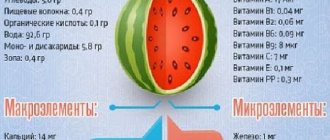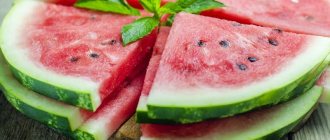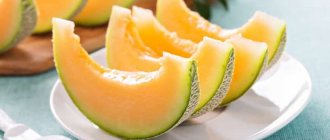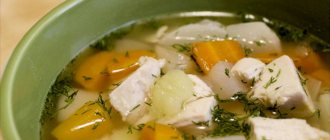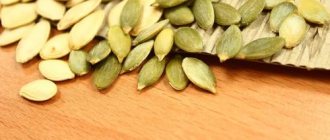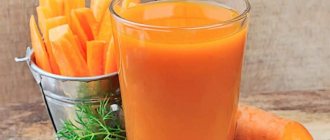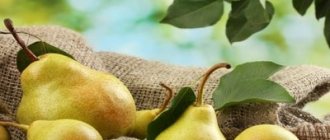Pancreatitis is an insidious disease that cannot be cured. Sad statistics indicate that there is a worldwide trend of increasing incidence (almost 2 times over the past three decades). In this case, not only adults, but also teenagers suffer. The disease imposes considerable restrictions on the rest of life, especially regarding nutrition.
With pancreatitis you cannot do without a diet. Therefore, it is not surprising that patients are interested in what foods can be eaten without negative health consequences. During the watermelon season, I really want to enjoy this huge, tasty and healthy berry. But people suffering from pancreatitis should first consult a doctor and not make independent decisions, since much depends on the severity of symptoms and the stage of the disease.
The benefits of watermelon for the body and gastrointestinal tract
Watermelons contain a high concentration of beneficial components. These substances have a beneficial effect on the digestive tract and the functioning of the body as a whole.
The berry improves immunity, normalizes metabolic processes, replenishes the supply of vitamins and creates a good prevention of some disruptions in the functional state of the gastrointestinal tract.
Beneficial features:
- diuretic effect due to the large amount of water contained in the pulp;
- normalization of stool, elimination and prevention of constipation;
- elimination of swelling;
- improvement of cell division processes;
- increasing the protective functions of the body;
- choleretic effect;
- restoration of electrolyte balance;
- prevention of urolithiasis;
- removing harmful cholesterol from the body;
- cleansing the body of toxic products;
- improvement of intestinal motor function.
Can watermelon provoke an exacerbation of pancreatitis?
Drawing up a menu for pancreatitis implies a clear division of products into a permitted and prohibited list, as well as a number of rules that must be taken into account when introducing berries into the diet. Watermelon has many beneficial properties for the digestive tract. However, if consumed untimely, it can provoke an exacerbation of the pathology.
For example, if you introduce the berry into the menu without waiting for a stable remission, when signs of exacerbation of the inflammatory process appear, or if you eat it in too much quantity.
Watermelon provokes exacerbation of pancreatitis in the following cases:
- one-time consumption of too large a portion of the product (stretching the walls of the stomach causes pain, a feeling of heaviness in the abdomen and disturbances in the process of bowel movement);
- deterioration of the patient’s general condition may be due to too frequent consumption of watermelon (with a significant increase in intestinal motility, nausea, vomiting, diarrhea and flatulence may occur);
- if pancreatitis is combined with cholelithiasis, then eating watermelon can provoke unwanted movement of large stones (the stone will get stuck inside the narrow ducts, and there will be a risk of developing pancreatic necrosis).
This product is low in calories and is great for weight loss.
Watermelon for chronic pancreatitis
When the vivid clinical picture subsides and a period of remission begins, then you should not deprive yourself of pleasure. True, you can start with 1 tablespoon per day. Doctors even advise starting not with pulp, but with juice that has undergone preliminary heat treatment. After an exacerbation, it is better not to experiment immediately with fresh products, but at first eat them slightly boiled or stewed.
It is important to closely monitor the body's reaction. If everything is in order, then the daily norm can be increased to 200 g. If the remission is long-term and the reaction to watermelon is normal, you are allowed to eat more - even up to a kilogram of juicy pulp, but you cannot feast on the fruit every day. Maximum – 3 times a week.
Still, much depends on the individual course of the remission period. For one patient, even 250 g of watermelon can cause discomfort, while another can eat a whole kilogram without any unpleasant consequences.
You can not only eat fresh watermelon, but also prepare mousse, jam, and candied fruits from it. At this time, the fetus will not only not cause harm, but will also have a positive effect on the entire body, in particular the digestive system.
You can't eat the seeds. To digest them, the production of large amounts of gastric and pancreatic juice is required. This leads to overload of the organ and exacerbation of the disease.
The main thing is to eat watermelon only at room temperature, not from the refrigerator. You need to take out the fruit in advance and wait until it warms up a little.
Important! Overweight patients should never choose a watermelon diet or a fasting day to lose weight or cleanse the body. An excess of fresh plant foods on the menu always leads to an exacerbation of the pathology.
Features of consuming watermelon at various stages of inflammation
Different stages of pancreatitis require specific adjustments to your diet. Products that are allowed for use during the period of remission may be prohibited in the acute form of the pathology. These include watermelon. At some stages of the inflammatory process, the berry can provoke a deterioration in the patient’s condition, at others it can improve the functioning of the pancreas and accelerate the tendency to recovery.
With exacerbation of pancreatitis
Watermelon contains special fibers that stimulate the process of gas formation. If there is damage to the mucous membranes of the pancreas or a violation of its functional state, the fetus can provoke an increase in the inflammatory process. To the existing symptoms of exacerbation of pancreatitis, bloating, diarrhea and colic will be added.
During an attack of pathology, the consumption of watermelons and other fresh berries is strictly prohibited.
Other consequences of eating watermelon for AP:
- increased secretion of gastric juice;
- increased inflammatory process;
- decreased tendency to recovery.
For cholecystitis
Watermelon is a natural diuretic. For inflammatory processes in the gallbladder, experts recommend including watermelons in the diet. The fruits contain plant fiber. This substance can eliminate constipation and prevent the recurrence of disturbances in bowel movements.
Watermelon has beneficial properties only when consumed during the period of remission of cholecystitis. During a painful attack or during an exacerbation of the pathology, this product is prohibited from being introduced into the diet.
For chronic pancreatitis
During the period of remission of chronic pancreatitis, watermelon is not only possible, but also necessary to be included in the diet. Experts recommend starting to eat the berries gradually and about a month after the attack of the pathology has stopped. The fruits contain large amounts of fructose. This substance does not have a negative effect on the pancreas and does not provoke an increase in the process of insulin production.
Benefits of watermelon for HP:
- the pulp of the fruit contains antioxidants, which significantly slow down inflammatory processes in the digestive system;
- watermelons contain a minimal amount of protein and lipids (when consumed, the load on the digestive tract is minimal);
- the presence of folic acid in the pulp ensures the normalization of metabolic processes in the body (nutrient components are better absorbed from the gastrointestinal tract).
Video on the topic: Why is it healthy to eat watermelon?
Useful properties of watermelon
This giant berry consists of more than 80% water, so there is no better product to quench your thirst. Watermelon has many beneficial properties:
- The product can safely be called dietary, since it contains very little fat and protein (per 100 g only 0.2 and 0.7 g, respectively).
- Magnesium and potassium improve the functioning of the nervous system and normalize heart rate.
- The antioxidants contained in the berries slow down the aging process, stop inflammation and prevent the risk of developing cancer.
- Folic acid helps improve the digestion and absorption of proteins. It is even called a digestive activator.
- A strong diuretic effect helps remove toxins and harmful substances from the body.
- The composition includes fructose, which, unlike glucose, gives the berry a pleasant and sweet taste, but does not require excessive insulin production.
Since watermelon is rich in useful substances, it is often prescribed for use in many pathologies, when the body is weakened and needs vitamins, macro- and microelements. But with pancreatitis, everything is not so clear. There are clear rules that must be strictly followed.
Recipes for preparing healthy dishes based on watermelon pulp
Watermelon for pancreatitis can be consumed not only as an independent product, but also in the form of drinks and even desserts. When preparing them, it is important to consider the absence of harmful additional ingredients. Pancreatitis implies a strict restriction of the daily sugar intake and prohibitions on some sweet ingredients.
Homemade juice:
- You can prepare juice from the pulp using a juicer, blender, or simply squeezing it using gauze.
- There should be no fiber present in the juice (if necessary, the workpiece is filtered again).
- You cannot store fresh watermelon juice (it is recommended to prepare the drink before drinking).
Refreshing mousse:
- To prepare the mousse you will need 700-800 g of pulp, 80 g of sugar or sweetener, 10 g of gelatin.
- Prepare the gelatin according to the instructions (pour in warm water and leave until it swells).
- Grind the pulp into a homogeneous puree.
- Combine all ingredients and re-grind or mix.
- The mousse can be consumed slightly chilled.
Watermelon honey is an excellent dessert for those who suffer from allergies to bee products. Watermelon honey:
- Squeeze the juice from the pulp.
- Bring the mixture to a boil (boil the juice for at least 2-3 minutes).
- Cool the juice and strain through cheesecloth.
- Boil the workpiece again for two or three hours (the liquid should become thick).
- During the cooking process, foam will form, which will need to be skimmed off.
- The cooled mass can be poured into containers and placed in the refrigerator.
- You can supplement the recipe with sweeteners.
Rules for choosing watermelon
Of course, if possible, it is better to grow watermelons yourself or buy them from familiar gardeners. Then you can definitely be sure of the quality of the product and the absence of harmful substances. If you have to buy a watermelon at the market or supermarket, you need to take note of the following recommendations:
- Don't rush and buy early varieties. Such fruits are usually grown with excessive use of fertilizers. Early watermelons often cause poisoning even in relatively healthy people, so people with pancreatitis should not risk it. The best time to buy is the last two weeks of August and the first month of autumn. Preference should be given to well-ripened late varieties.
- It is also necessary to pay attention to the dimensions. The optimal weight is 5–7 kg. If the fruits are too small, they are most likely not ripe. Large watermelons, of course, can be juicy, sweet, and tasty. But there is a huge possibility that they were grown with the help of nitrates, growth stimulants and other chemicals.
- The crust should be smooth and slightly glossy, without damage, rot, cracks or dents. You can try scratching the peel a little, and a characteristic herbal smell should appear.
- The tail can tell a lot about the ripeness of the berry. If it is green, this indicates that the watermelon was picked ahead of schedule. Unripe fruits should not be eaten if you have pancreatitis. The tail must be dry.
- You can tap the peel. The sound should be dull. When squeezing from the sides, a cracking sound is heard.
- It’s good if you can cut the fruit and look at the pulp. Sugar grains should be clearly visible on the cut. A smooth cut indicates a high concentration of harmful substances. If the flesh is a rich, bright red color, this is a reason to be wary. The ideal option is if the flesh is pink or light red. The veins should be pink or slightly purple. If they are white or yellow, it means that a considerable amount of nitrates was used during cultivation.
- At home, you can conduct a test by dipping a piece of pulp into clean water in a transparent container. If the water becomes cloudy, but not pink, then the fruit is environmentally friendly. If the liquid turns pink, most likely the concentration of nitrates is off the charts.
You can check the fruit for ripeness at home in a large bathtub or basin. You need to pour water there and lower the watermelon. If it floats to the surface, it is ripe; if it sinks, it is immature.
What are the benefits of melon?
A distinctive feature of melon is the presence of a large number of natural antioxidants in the fruit. The berry can slow down inflammatory processes, improve the functioning of the digestive system and normalize the process of bowel movement.
Melon contains fructose. This nuance allows the product to be used for patients with diabetes (the pathology in most cases becomes a complication of pancreatitis).
Beneficial features:
- improving the process of food digestion;
- increasing the regenerative properties of tissues;
- normalization of water-salt metabolism in the body;
- accelerating the process of removing sand and small stones from the kidneys (due to its diuretic properties);
- improvement of peristalsis of the digestive organs;
- neutralization of the effects of toxic substances;
- increased vitality;
- improving the condition of the walls of arteries, veins and blood vessels;
- beneficial effect on the immune system.
Is it possible to salt watermelons for pancreatitis?
In general, all pickled foods are contraindicated for pancreatitis. It doesn't matter whether it's homemade or store-bought. As a rule, a lot of salt and sugar are always added to preserves. The high content of these ingredients provokes another inflammatory process.
If you give in to your weakness, you may regret it later. Therefore, you should not give in to temptation even in the stage of long-term remission, when nothing bothers you.
Melon for exacerbation of pancreatic pathology
During the period of exacerbation of pancreatitis, melon belongs to the category of prohibited products. Fruits can be introduced into the diet a few weeks after the attack has stopped. At the initial stage of rehabilitation therapy, it is recommended to consume melons after heat treatment (in the form of jelly, puree, jelly or baked, as part of other dishes).
Unripe fruits are prohibited during all stages of pancreatitis (an increased content of coarse fiber will provoke an attack of pathology).
Consequences of eating melon for AP:
- increased symptoms of diarrhea;
- disruption of digestive processes;
- increased intensity of abdominal pain;
- the occurrence of flatulence.
